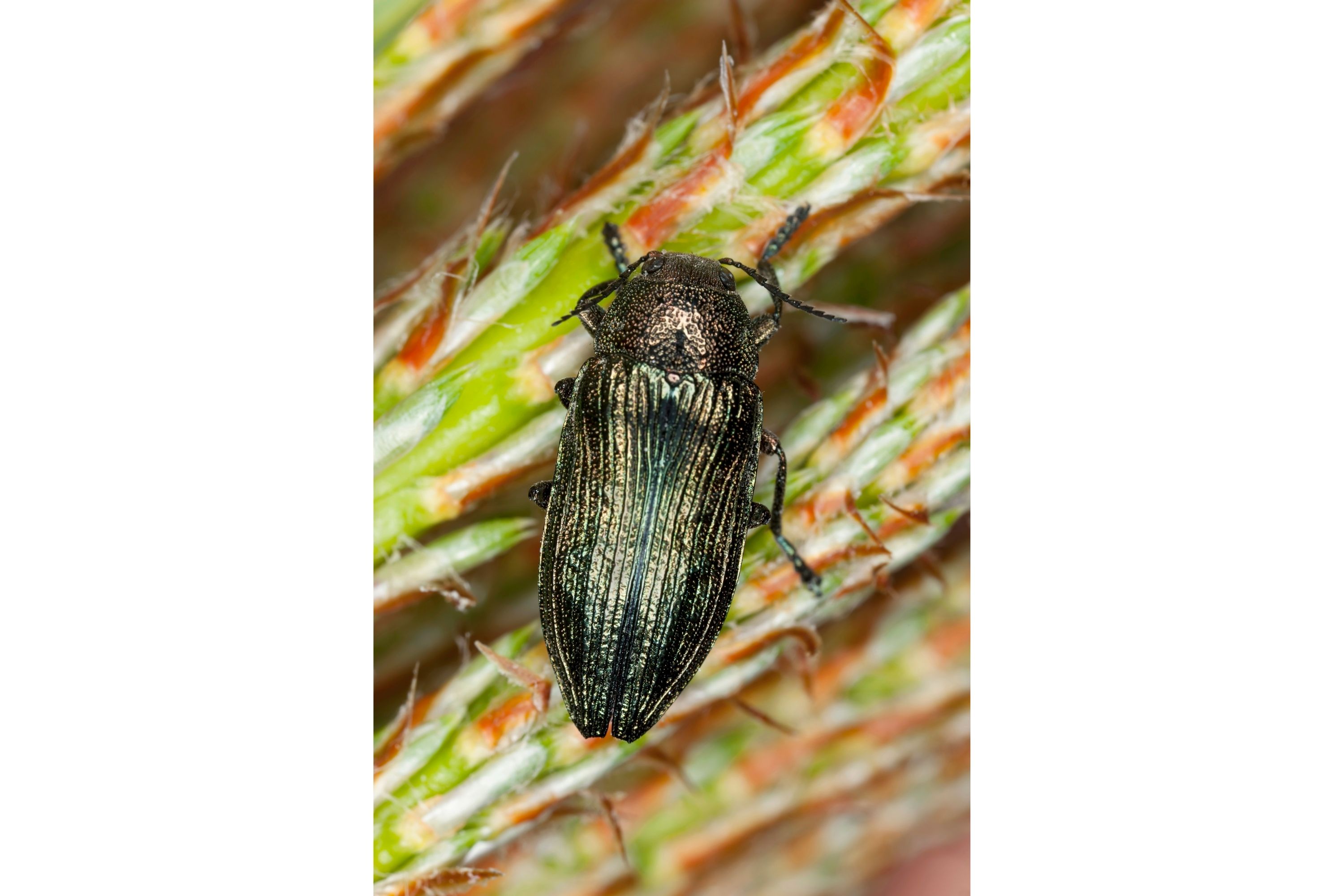Buprestis cupressi
(Buprestis cupressi)

Description
Buprestis cupressi is a beetle from thejewel beetle family (Buprestidae). The genus Buprestis includes over one hundred and twenty species worldwide. In Europe, the genus Buprestis is represented by fourteen species, in Central Europe there are five species. The species Buprestis cupressi is found only in southern Europe. The name of the beetle first appeared in the catalog for Dejean's beetle collection in 1821 in the spelling Buprestis Cypressi. In the 2nd edition of the 1833 catalog the beetle is called Ancylocheira cupressi. The first description is provided by Germar in the 17th fascicle of the Fauna Insectorum Europae with reference to the more recent catalog by Dejean as Buprestis cupressi. The year of publication of the fascicle is not recorded on the print. The elongated oval, robustly built beetle reaches a length of 22 to 25 millimeters. The upper side is typically faintly shiny black in the female, parts of the head are yellow in the male, and the underside is dark brownish coppery in both sexes, without spots. Yellow spots can also be formed in the female on the head, on the pronotum and/or on the elytra, after which Obenberger names five aberrations. The head is densely punctured with a faint longitudinal furrow on the forehead. The head of the females is mostly black, while the males have a yellow marking that can take the form of a crown. The eyes, set apart from each other, are large and oval. The eleven-limb antennae are as long as the pronotum. From the third segment they are sawn inwards to a point. The second antennal segment is also longer than wide. The upper lip is slightly cut out in front. The strong upper jaws are slightly curved and bidentate. The jaw palps are four-membered, the two terminal members are oblong and ovate in size. The final segment of the tripartite lip tastyis ovate and truncated. The beetle was found in Greece between the beginning of May and the second third of August. The beetles are found on the plants in which the larvae are developing. These are primarily cypresses and, in Italy, thick trunks of juniper. Cedar, oriental tree of life and tamarisk are also mentioned. It is reported from Sicily that the beetles fly around junipers in coastal dunes in the sunshine during the hottest part of the day. The larvae eat irregular burrows that first run under the bark and then advance into the sapwood. The veins run along the annual rings down to the root area.
Taxonomic tree:







